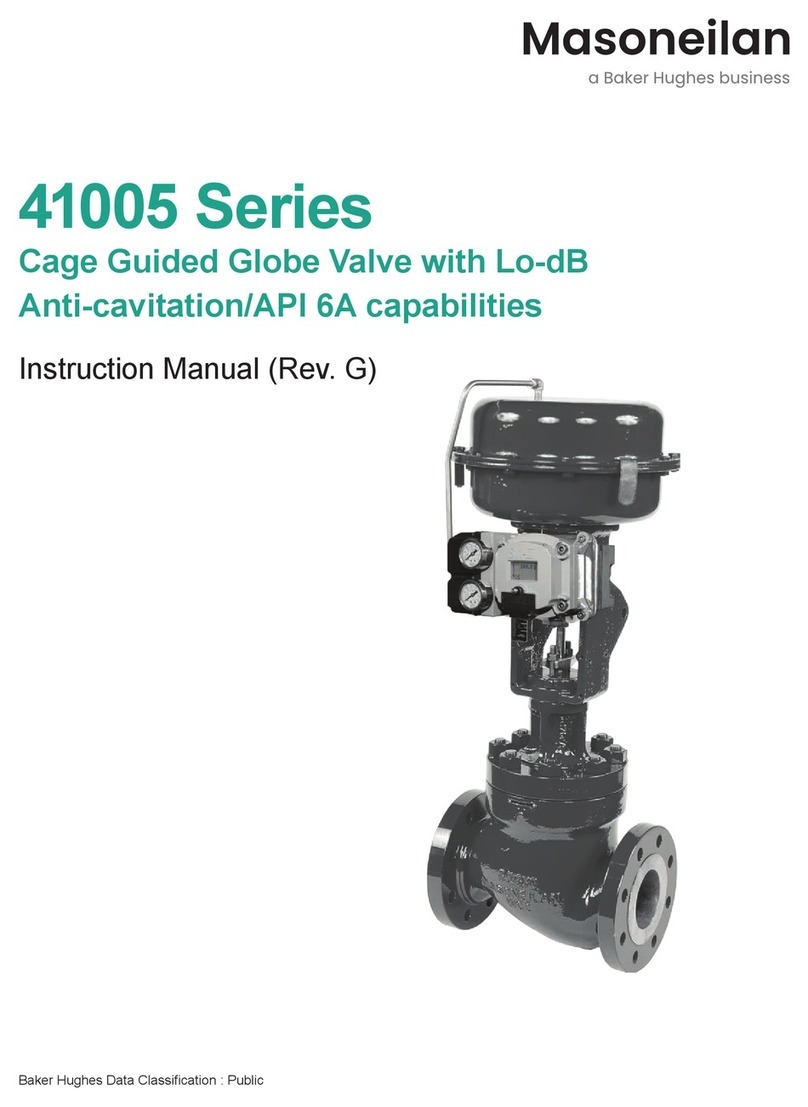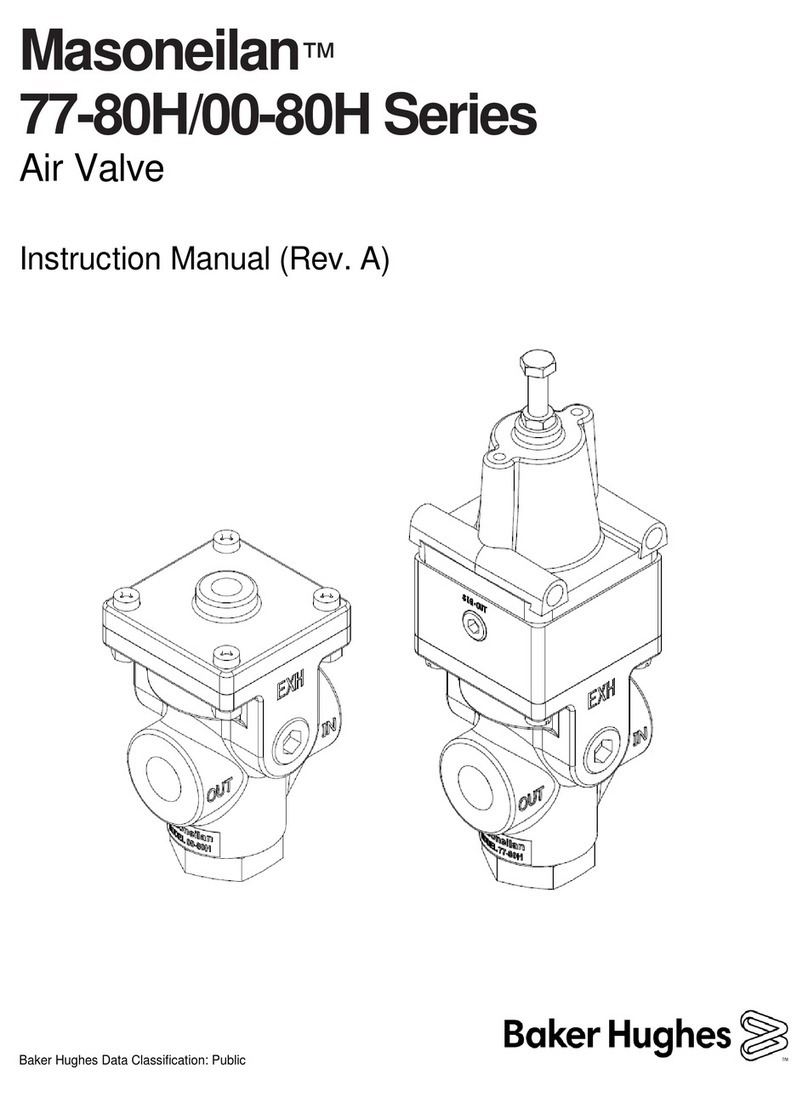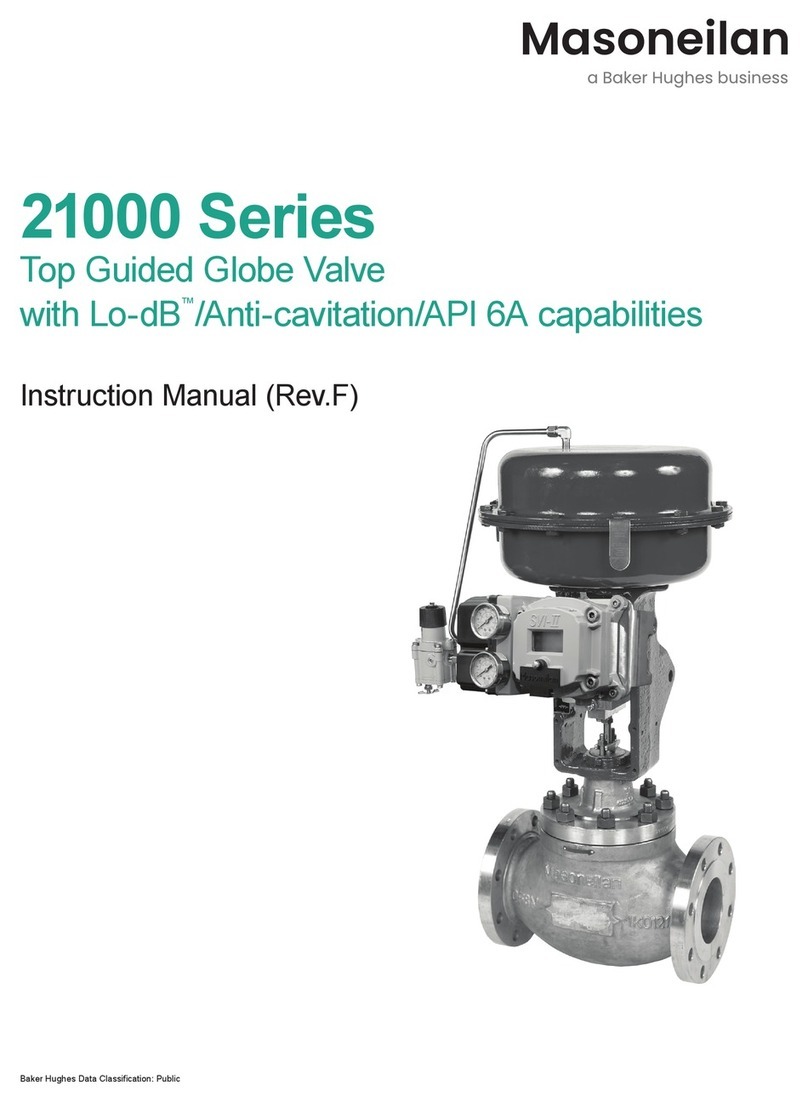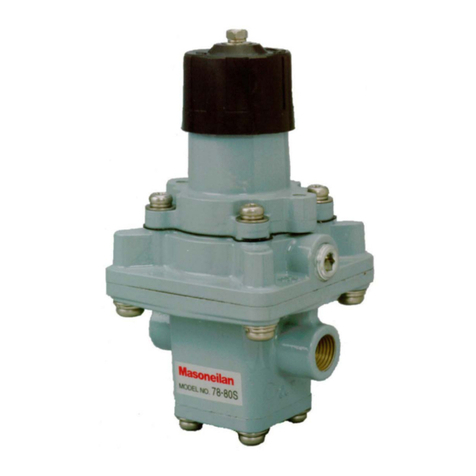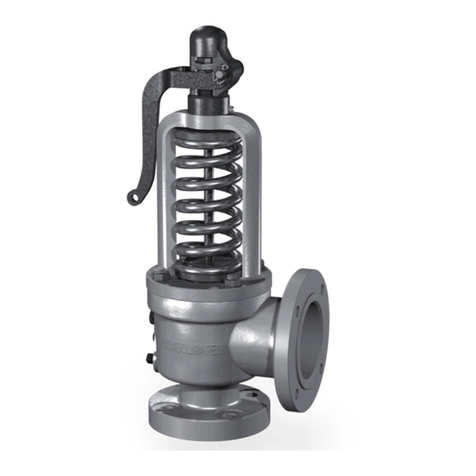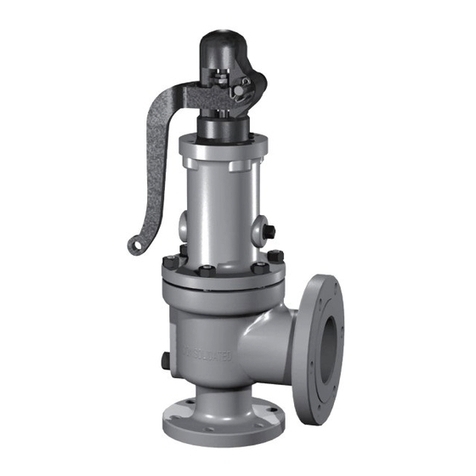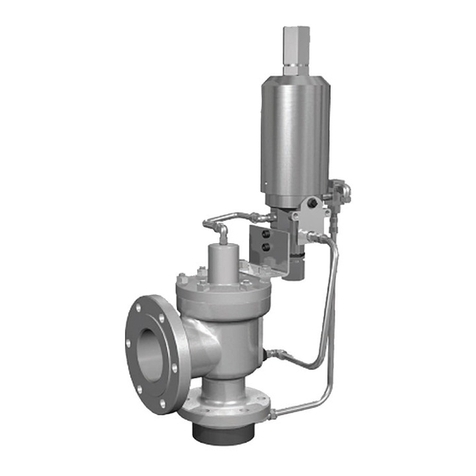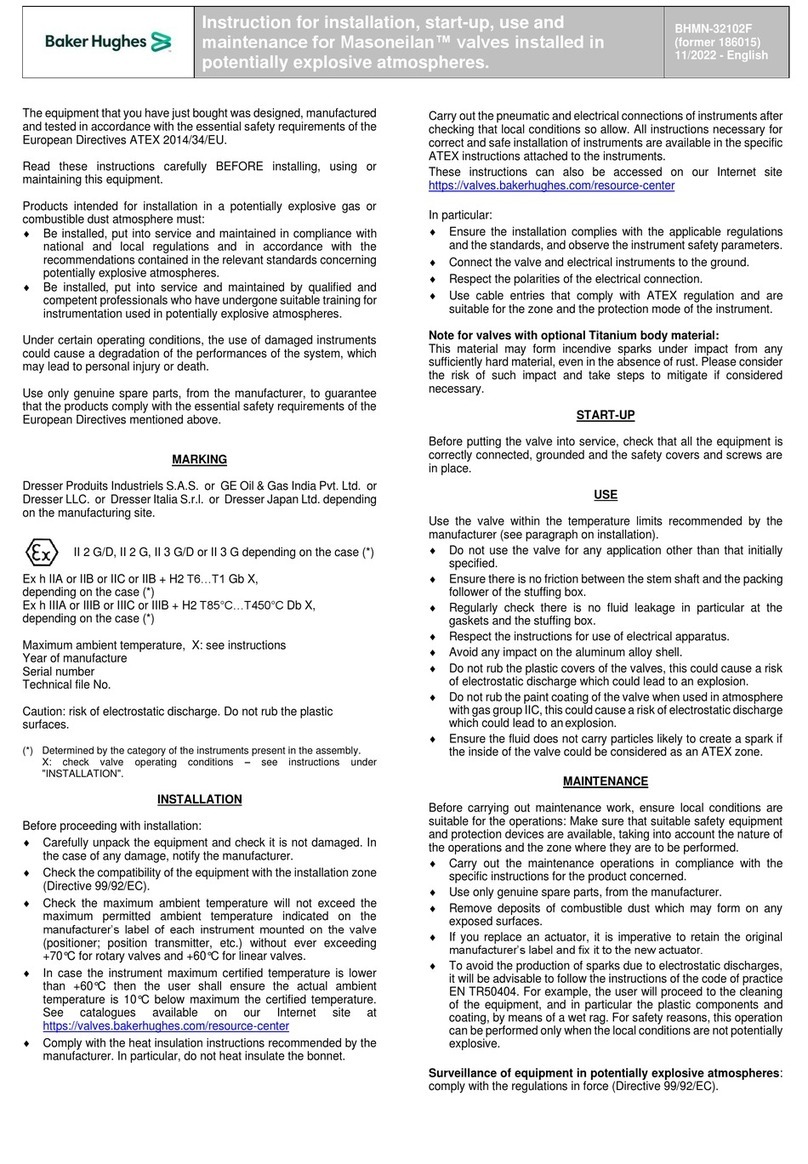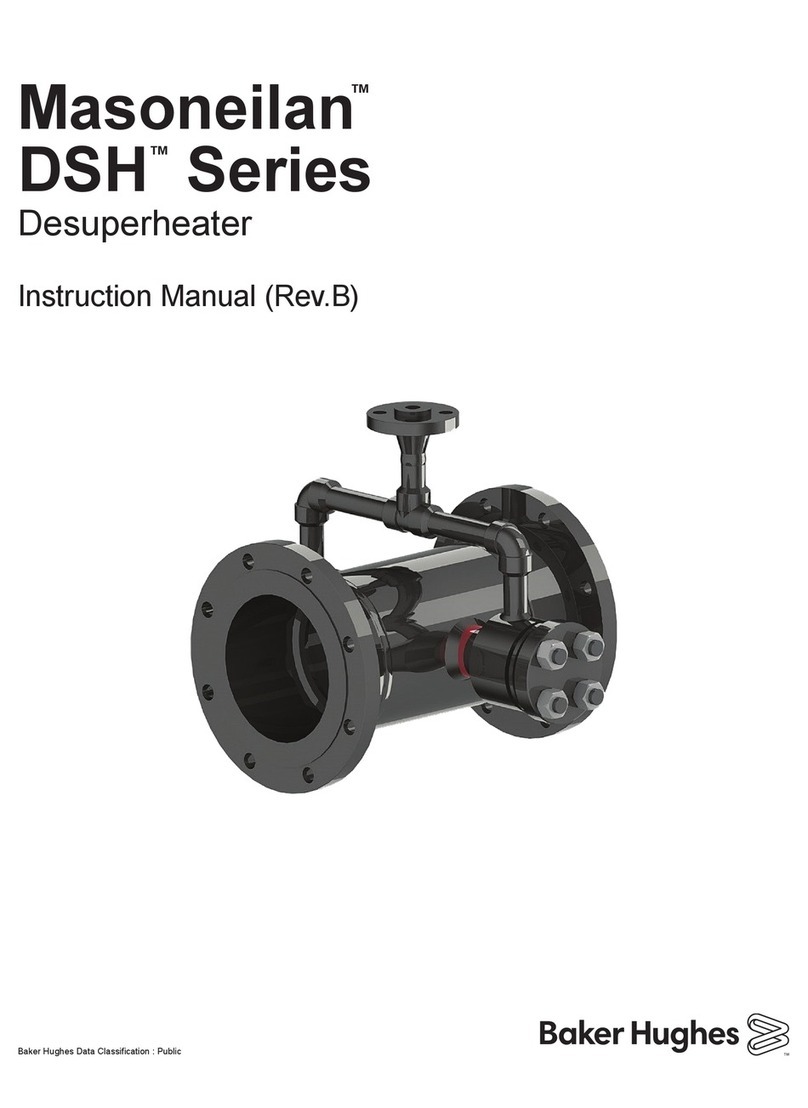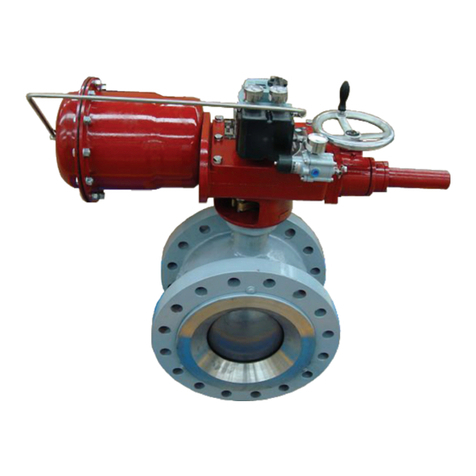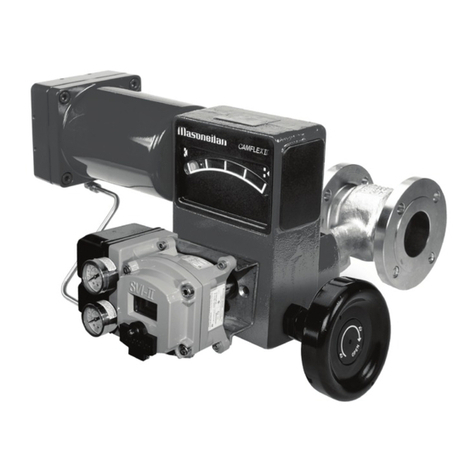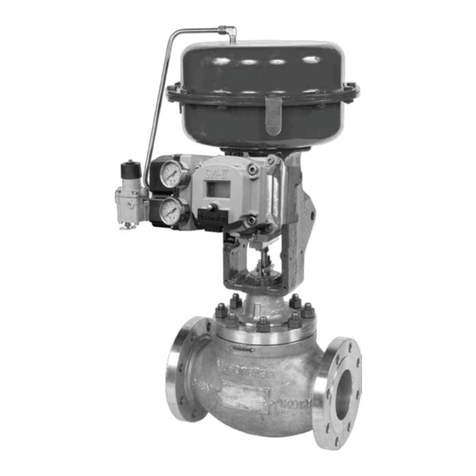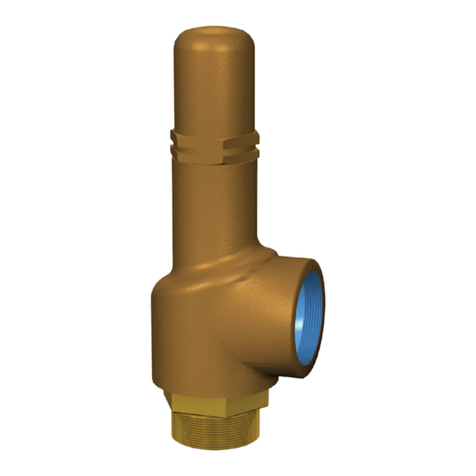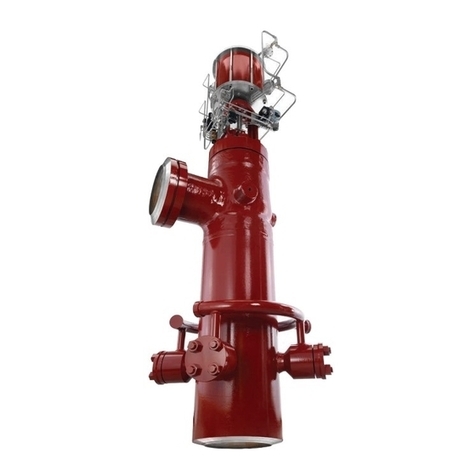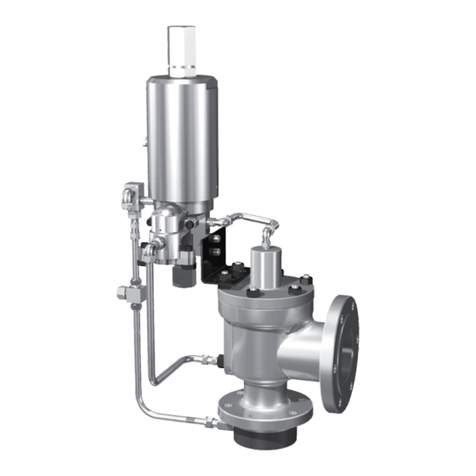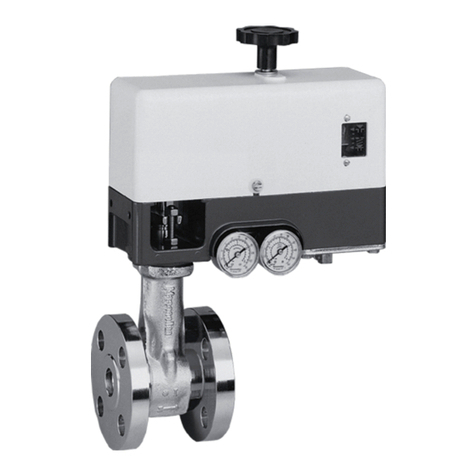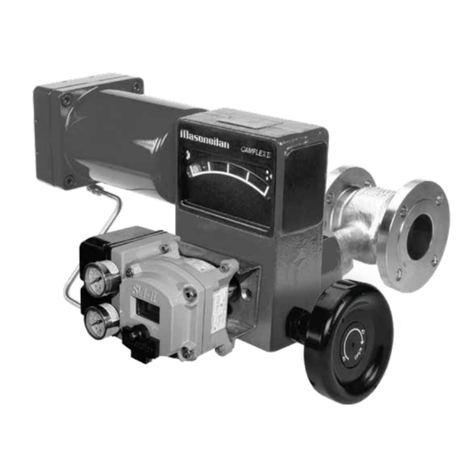
Masoneilan 37002 Series MiniTork II with Actuator 35 Instruction Manual | 7
Copyright 2020 Baker Hughes Company. All rights reserved.
Valve Maintenance
MiniTork butterfly valves are a standard line of control valves, i.e.
standard parts and materials cover a wide range of applications.
If emergency repairs ever become necessary, parts can probably
be taken from any MiniTork valve of the same size in your stock.
In addition, some parts such as packing, bearings (for the same
shaft diameter) are the same for Camflex, MiniTork and Ball
valves
Body Disassembly
(Figures 5, 6, and 7)
1. Bypass the MiniTork valve and relieve fluid pressure from
the body. Disconnect air (or electric lines) from the actuator
(or its accessories) and remove the valve from the line
Note: In the case of an air-to-close valve, turn the
handwheel or apply air pressure to set the disk to the
closed position.
2. Remove front cover (21), rear cover (18) and bottom cover
(30).
3. Remove clip (22) and back off the clevis pin (24). Remove
air supplied at step 1.
4. If a positioner is mounted on the valve, disconnect the cam
from the plug shaft (8) (Caution: see instruction sheet of
positioner before removing cam). If the valve is not equipped
with positioner, remove the screw (27) and the shaft cover
(26). Remove screws (101) and lock washers (102), then
remove the actuator from the yoke (34).
5. Before continuing the disassembly procedure, mark the
exact position of the arm (35) on the shaft (light punch mark,
pencil mark, etc.).
Note: the slot located at the end of the shaft indicates
the position of the disk in the valve body.
6. Loosen the cap screw (37) and remove the nuts (13) from
the packing box studs (17) and the yoke studs (14). Using a
mallet, gently tap the side of the yoke on the body end and
remove the yoke (34) and lever (35) assembly.
7. Drive out the disk studs (4) and remove the shaft from
the valve body. If this proves difficult, remove the packing
(10), then by using a pipe nipple of suitable size between
the flange and disk arm tightened firmly on the shaft, and
reversing the packing flange and nuts (13), the shaft may be
drawn out of the body by unscrewing nuts (13) (See Figure
3).
8. Remove the valve body (4), the packing-box ring (9) and
the spacer tube (7). If the valve body has an elastomer
sleeve (2), remove the sleeve and the two O-rings (3).
Lastly, disengage the bearings (6) and the spring (50).
(There is no spring (50) on valves with an elastomer sleeve.
See Figure 5).
9. Examine all parts for damage due to erosion corrosion or
wear. Replace all defective parts, pins (51) and all packing.
Clean all reused parts thoroughly prior to reassembly.
Body Reassembly
(Figures 5 and 6)
1. Fit the spring (50) (only on valve bodies without sleeve)
and the lower bearing in the body. Coat the shaft (8) with
Molykote G (or equivalent) along the entire surface roughly
corresponding to the spacer tube
2. If the valve is equipped with a sleeve, coat the two O-rings
(3) with silicone grease and fit them inside the sleeve. Slide
the sleeve into the body and align the shaft entry bore holes
with those of the body (see Figure 5).
3. Slip the upper bearing and spacer tube onto the shaft. Place
the disk in its normal position inside the body and feed
the shaft all the way into the body, together with the parts
previously fitted with it.
Note: The pin holes in the disk must be facing the
packing box. If the valve is equipped with a sleeve, coat
the perimeter of the disk with silicone grease so that the
disk can be fitted more easily.
4. Secure the body assembly on a vise and lock the disk in the
closed position (i.e. disk centerline on the plane of the body).
Note: If the shaft and disk are reused, check that the pin
hole taper matches that of the shaft holes.
If reusing the shaft and disk, fasten the two parts together
using new pins.
Note: When replacing a shaft, the old disk may be used as
a guide for drilling and reaming the pin holes. If a new disk
is required, the holes of the old shaft cannot be used. For
this reason, a new disk may not be ordered without a shaft.
5. Install the packing box ring (9), the packing (10) and the
packing gland (15). The oblique section of each ring must be
shifted 120° in relation to that of the previous ring.
6. Slip the yoke (34) some of the way over the end of the shaft,
at the same time fitting the following parts in the order shown
below: packing box flange (16), disk arm (35) and ring (5).
Lastly, finish fitting the yoke on the studs (14) by fitting the
shaft into the bearing (25). Apply the lever (35) against the
spacer tube (5) and tighten the yoke nuts (13). Screw the
packing box nuts onto the studs (17) but do not tighten them.
Note:
a) During this operation, make sure that the position of the
yoke on the studs complies with the action and position
selected for the actuator.
b) Also make sure that the arm (35) is in the correct
position on the shaft. Refer to the markings made during
disassembly. If parts have been replaced, assess their
final relative position by holding them one in front of the
other before fitting them. For this purpose, if the shaft
or disk or both have been replaced and the two parts
are not pinned together, remember to align the slot at
the end of the shaft with the disk (the disk being locked
in the closed position).
